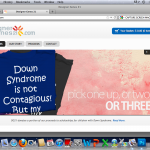Read this article via fournaisegroup.com in which 73% of CEO’s think their marketing people are a bit flaky. As someone who bridges the marketing and business development gap, I concur to a large degree, preferring an evidenced outcome based assessment model versus a brand awareness model of measurement on the expense of advertising. Here are a few of their findings:
The top issues CEOs have with their Marketers are:
(1) They keep on talking about brand, brand values, brand equity and other similar parameters that their top management has great difficulties linking back to results that really matter: revenue, sales, EBIT or even market valuation (77%)
(2) They focus too much on the latest marketing trends such as social media, because they believe they represent the new marketing frontiers – but can rarely demonstrate how these trends will help them generate more business for the company (74%)
(3) When asked to increase their Marketing ROI, they tend to understand it as cost cutting through better economies of scale or negotiations with their third-party partners and agencies, instead of top-line growth generation: more revenue, more sales, more prospects, more buyers (73%)
(4) They are always asking for more money, but can rarely explain how much incremental business this money will generate (72%)
(5) They bombard their stakeholders with marketing data that hardly relate to or mean anything for the company’s P&L (70%)
(6) Unlike CFOs and Sales Forces, they don’t think enough like businesspeople: they focus too much on the creative, “arty” and “fluffy” side of marketing and not enough on its business science, and rely too much on their ad agencies to come up with the next big idea (67%)
The worrying part: while 73% of CEOs think Marketers lack business credibility and are not effectiveness-focused enough to generate incremental customer demand, 69% of the Marketers Fournaise talked to feel their strategies and campaigns do make an impact on the company’s business, even though they can’t precisely quantify or prove it – confirming the great CEO-Marketers disconnect.
We prefer a the CEO’s measurements and demand for outcome based results but believe in using as much creativity as possible to achieve those results. Profits are the 0x and creativity is the cart (or horse and carriage if you roll that way). The fact that the company has profits allows marketers to use a portion of those profits to fund their creativity. Oftentimes, marketers think of this in reverse order. It can become tempting to think that a product or service exists because we market it. In actuality, we can market because their is a product or service that exists to be promoted. Thus, marketers should speak and measure in these terms as well as traditional marketing terminology:
1) Profits and sale. Profits are to be the first line of evaluation at all times (or outcomes for nonprofits). Always track company profits versus marketing efforts. Even if direct causation cannot be tracked, strong correlation should be seen.
2) Qualified leads increased and delivered to sales force. If you are not finding out the media in which captured the people calling sales, you are failing in a huge part of your marketing responsibilities.
3) Forward moving conversions (example, increase of x% of number of Facebook friends who made purchases).
4) Referrals generated resulting in new qualified leads. Are any marketing efforts resulting in making our existing customers more prone to refer.
5) Specific revenue generation vs. expense from specific mediums, even better specific campaigns and ads
6) Hard metric profit/sales increase goals. You need to be judged and critiqued like every other operating sector within the business. Theses should be specific, bound in time and number and outcome rather than output based.
Second to this are things like consumer brand awareness, social media follower counts, page visits. Three hundred new Facebook friends who never convert to purchasers do little good in convincing your CEO that their marketing expenses are valid expenses.
So marketers, learn business-ese and you’ll find your CXO’s will view your department as less flaky and be willing to increase your budgets.

